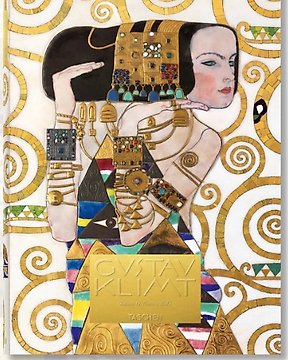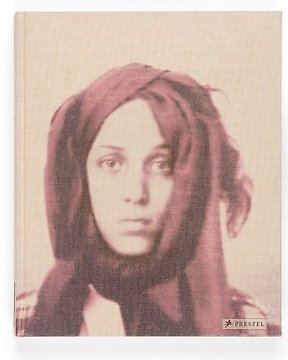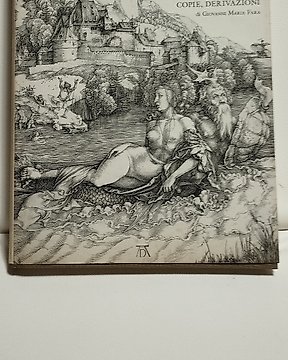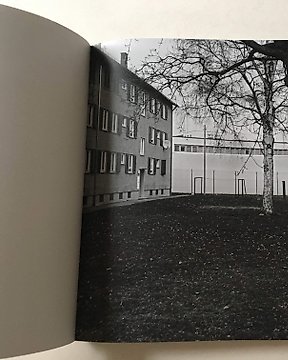Parfait
Προβολή μετάφρασηςExcellent enjoy this exceptional publication
Το Catawiki συνεχώς ενημερώνει την τεχνολογία του. Είστε χρήστης ενός ξεπερασμένου προγράμματος περιήγησης. Για να βελτιστοποιήσετε την εμπειρία περιήγησής σας, παρακαλούμε ενημερώστε το πρόγραμμα περιήγησης.
Μπορείτε να ορίσετε τις προτιμήσεις cookies χρησιμοποιώντας τις παρακάτω εναλλαγές. Μπορείτε να ενημερώσετε τις προτιμήσεις σας, να αποσύρετε τη συγκατάθεσή σας ανά πάσα στιγμή και να δείτε μια λεπτομερή περιγραφή των τύπων cookies που χρησιμοποιούμε εμείς και οι συνεργάτες μας στην μας Πολιτική Cookies.
Αρ. 85310441
![[Porcelain] / Oliver Impey and Malcolm Fairley, e.a. - The Nasser D.Khalili Collection of Japanese Art, Meiji No Takara, Treasures of Imperial Japan - 1995 #1.1](https://assets.catawiki.com/image/cw_ldp_l/plain/assets/catawiki/assets/2024/5/20/1/d/e/1de7ce62-d854-4aec-8295-963a57979e52.jpg)
![[Porcelain] / Oliver Impey and Malcolm Fairley, e.a. - The Nasser D.Khalili Collection of Japanese Art, Meiji No Takara, Treasures of Imperial Japan - 1995 #1.2](https://assets.catawiki.com/image/cw_ldp_l/plain/assets/catawiki/assets/2024/5/20/a/f/0/af02d763-e72f-42b5-be1f-e4ea2f3f3be7.jpg)
![[Porcelain] / Oliver Impey and Malcolm Fairley, e.a. - The Nasser D.Khalili Collection of Japanese Art, Meiji No Takara, Treasures of Imperial Japan - 1995 #2.1](https://assets.catawiki.com/image/cw_ldp_l/plain/assets/catawiki/assets/2024/5/20/7/e/5/7e5c1177-fb63-40e5-98cf-6ba15f040872.jpg)
The Nasser D.Khalili Collection of Japanese Art, Meiji No Takara, Treasures of Imperial Japan, Ceramics Part I Porcelain,Volume V,248 pages and Ceramics Part II Earthenware,Volume V, The Kibo Foundation,1995
The Khalili Collection of Japanese Art is a private collection of decorative art from Meiji-era (1868–1912) Japan, assembled by the British-Iranian scholar, collector and philanthropist Nasser D. Khalili. Its 1,400 art works include metalwork, enamels, ceramics, lacquered objects, and textile art, making it comparable only to the collection of the Japanese imperial family in terms of size and quality. The Meiji era was a time when Japan absorbed some Western cultural influences and used international events to promote its art, which became very influential in Europe. Rather than covering the whole range of Meiji-era decorative art, Khalili has focused on objects of the highest technical and artistic quality. Some of the works were made by artists of the imperial court for the Great Exhibitions of the late 19th century. The collection is one of eight assembled, published, and exhibited by Khalili.
Although the collection is not on permanent public display, its objects are lent to cultural institutions and have appeared in many exhibitions from 1994 onwards. Exhibitions drawing exclusively from the collection have been held at the British Museum, Israel Museum, Van Gogh Museum, Portland Museum, Moscow Kremlin Museums, and other institutions worldwide.
The collection is one of eight assembled by Nasser D. Khalili, each of which is considered among the most important in its field. Three of them include works from Japan: the collection of Japanese art, the Khalili Collection of Kimono, and the Khalili Collection of Enamels of the World. Khalili observed that Japanese arts were less well-documented than European arts of the same period, despite being technically superior: "Whilst one could argue it is relatively easy to replicate a Fabergé, to replicate the work of the Japanese master is nigh on impossible." As well as assembling these collections, Khalili founded the Kibo Foundation (from the Japanese word for "hope") to promote the study of art and design of the Meiji era, publishing scholarship about the collection and its historical context.
Porcelain
Oliver Impey and Malcolm Fairley with contributions by Clare Pollard and Vibeke Woldbye,
248 pages; fully illustrated in colour; 40 x 30 cm; hardback with slipcase; 1995; ISBN: 978-1-874780-05-2
The collection includes, among other porcelain works, more than eighty by Miyagawa (Makuzu) Kozan, described in 1910 as Japan's greatest living ceramic artist. Kozan was the second ceramicist ever to be appointed Artist to the Imperial Household. He and his workshop transformed underglaze blue porcelain, decorating with subtleties of colour that had not previously been possible. He also made award-winning objects with flambé or crystalline glaze. Some of his works showed the influence of European graphic design, while he combined traditional Japanese and Chinese techniques with new technologies from the West. The collection illustrates how he and his son Hanzan became increasingly ambitious, introducing new colours, designs and sculptural effects in works sent to international exhibitions.
Earthenware
Tsuyoshi, Tamazaki; Impey, Oliver; Fairley, Malcolm; Fairley, Malcol
300 pages; fully illustrated in colour; 40 x 30 cm; hardback with slipcase; 1995; ISBN: 978-1-874780-06-9
The 171 earthenware objects in the collection include some by Yabu Meizan and his contemporaries, typically decorated with enamel and gold.Meizan was not only a prolific producer but won multiple awards at national and international exhibitions, where his creations were exhibited as works of art. The collection shows that Meizan used Chinese as well as Japanese motifs in his decoration, drawing from sources including Buddhist imagery and the prints of Hiroshige.His designs became more intricate, sometimes using a thousand motifs in a single art work; towards the end of his career, however, he took a different approach, covering whole vases in a single motif.Kinkozan Sobei VII and Takbe Shoko are other distinctive decorators represented in the collection.
The Nasser D.Khalili Collection of Japanese Art, Meiji No Takara, Treasures of Imperial Japan, Ceramics Part I Porcelain,Volume V,248 pages and Ceramics Part II Earthenware,Volume V, The Kibo Foundation,1995
The Khalili Collection of Japanese Art is a private collection of decorative art from Meiji-era (1868–1912) Japan, assembled by the British-Iranian scholar, collector and philanthropist Nasser D. Khalili. Its 1,400 art works include metalwork, enamels, ceramics, lacquered objects, and textile art, making it comparable only to the collection of the Japanese imperial family in terms of size and quality. The Meiji era was a time when Japan absorbed some Western cultural influences and used international events to promote its art, which became very influential in Europe. Rather than covering the whole range of Meiji-era decorative art, Khalili has focused on objects of the highest technical and artistic quality. Some of the works were made by artists of the imperial court for the Great Exhibitions of the late 19th century. The collection is one of eight assembled, published, and exhibited by Khalili.
Although the collection is not on permanent public display, its objects are lent to cultural institutions and have appeared in many exhibitions from 1994 onwards. Exhibitions drawing exclusively from the collection have been held at the British Museum, Israel Museum, Van Gogh Museum, Portland Museum, Moscow Kremlin Museums, and other institutions worldwide.
The collection is one of eight assembled by Nasser D. Khalili, each of which is considered among the most important in its field. Three of them include works from Japan: the collection of Japanese art, the Khalili Collection of Kimono, and the Khalili Collection of Enamels of the World. Khalili observed that Japanese arts were less well-documented than European arts of the same period, despite being technically superior: "Whilst one could argue it is relatively easy to replicate a Fabergé, to replicate the work of the Japanese master is nigh on impossible." As well as assembling these collections, Khalili founded the Kibo Foundation (from the Japanese word for "hope") to promote the study of art and design of the Meiji era, publishing scholarship about the collection and its historical context.
Porcelain
Oliver Impey and Malcolm Fairley with contributions by Clare Pollard and Vibeke Woldbye,
248 pages; fully illustrated in colour; 40 x 30 cm; hardback with slipcase; 1995; ISBN: 978-1-874780-05-2
The collection includes, among other porcelain works, more than eighty by Miyagawa (Makuzu) Kozan, described in 1910 as Japan's greatest living ceramic artist. Kozan was the second ceramicist ever to be appointed Artist to the Imperial Household. He and his workshop transformed underglaze blue porcelain, decorating with subtleties of colour that had not previously been possible. He also made award-winning objects with flambé or crystalline glaze. Some of his works showed the influence of European graphic design, while he combined traditional Japanese and Chinese techniques with new technologies from the West. The collection illustrates how he and his son Hanzan became increasingly ambitious, introducing new colours, designs and sculptural effects in works sent to international exhibitions.
Earthenware
Tsuyoshi, Tamazaki; Impey, Oliver; Fairley, Malcolm; Fairley, Malcol
300 pages; fully illustrated in colour; 40 x 30 cm; hardback with slipcase; 1995; ISBN: 978-1-874780-06-9
The 171 earthenware objects in the collection include some by Yabu Meizan and his contemporaries, typically decorated with enamel and gold.Meizan was not only a prolific producer but won multiple awards at national and international exhibitions, where his creations were exhibited as works of art. The collection shows that Meizan used Chinese as well as Japanese motifs in his decoration, drawing from sources including Buddhist imagery and the prints of Hiroshige.His designs became more intricate, sometimes using a thousand motifs in a single art work; towards the end of his career, however, he took a different approach, covering whole vases in a single motif.Kinkozan Sobei VII and Takbe Shoko are other distinctive decorators represented in the collection.
Parfait
Προβολή μετάφρασηςExcellent enjoy this exceptional publication
Beautiful piece arrived in said (perfect) condition - I am very happy😊 Excellent packaging and superfast shipping - thank you👍
Προβολή μετάφρασηςThank you for the professional packing and for the good communication, I'm happy to deal with you again. The Swarovski arrived very fast and in perfect conditions. Seller highly recomanded.
Προβολή μετάφρασηςReally glad that the item was delivered next day and Swarovski is in perfect condition
Top vendeur
Προβολή μετάφρασηςGlad you liked this exceptional book
Perfetto. Condizioni eccellenti. Libro straordinario.
Προβολή μετάφρασηςtop très rapide très bien emballé
Προβολή μετάφρασηςSuper c’est un beau livre
Excellent achat, envoi très rapide et soigné d'un magnifique ouvrage. Grand merci
Προβολή μετάφρασηςSuper c’est un livre exceptionnel
Merveilleux !
Προβολή μετάφρασηςC’est un livre exceptionnel
Items as shown on the pictures. Perfectly packed. Arrived quickly. Recommended seller!
Προβολή μετάφρασηςVery knowledgeable and professional collector,
oggetto come descritto in asta. arrivato in tempi brevi e ben imballato
Προβολή μετάφρασηςoggetto come descritto in asta. arrivato in tempi brevi e ben imballato
Προβολή μετάφρασηςarrivato in tempi brevi e ben imballato.
Προβολή μετάφρασηςEverything good!!!
Προβολή μετάφρασηςExcellent, am glad it reached safely.
Thanks very much. A lovely and interesting book. Quickly delivered.
Προβολή μετάφρασηςBeautiful book. Carefully packaged an quickly delivered. Recommended seller.
Προβολή μετάφρασηςVery beautifull Swarovski Mandarin Ducks. Well packed.👍🏻
Προβολή μετάφρασηςNice pieces of Swarovski and well packed.👍🏻
Προβολή μετάφρασηςBeautifull piece of Swarovski. Well packed.👍🏻
Προβολή μετάφρασηςGood piece of Swarovski. Well packed. 👍🏻
Προβολή μετάφρασηςVery good piece of Swarovski. Well packed.👍🏻
Προβολή μετάφρασηςTop vendeur
Προβολή μετάφρασηςEnjoy this wonderful publication
quick delivery . neatly packaged. very happy
Προβολή μετάφρασηςvraagje heb 2 stukken gekocht: verzendkosten = 40 euro per stuk=80 euro EEN (1) pakket ontvangen(2 stukken) waarom 2 x verzendkosten!!!!!!!!!!!!!!!! betalen!!!!
Προβολή μετάφρασηςI usually ship each item individually and that explains reason for Euro 40 per parcel. However, on this specific occasion I combined the 2 crystal items in one DHL box to save shipment cost.
Fast delivery, item was very well packaged and in good condition.
Προβολή μετάφρασηςPerfect!
Προβολή μετάφρασηςExcellent, enjoy reading this splendid publication
Parfait
Προβολή μετάφρασηςExcellent enjoy this exceptional publication









